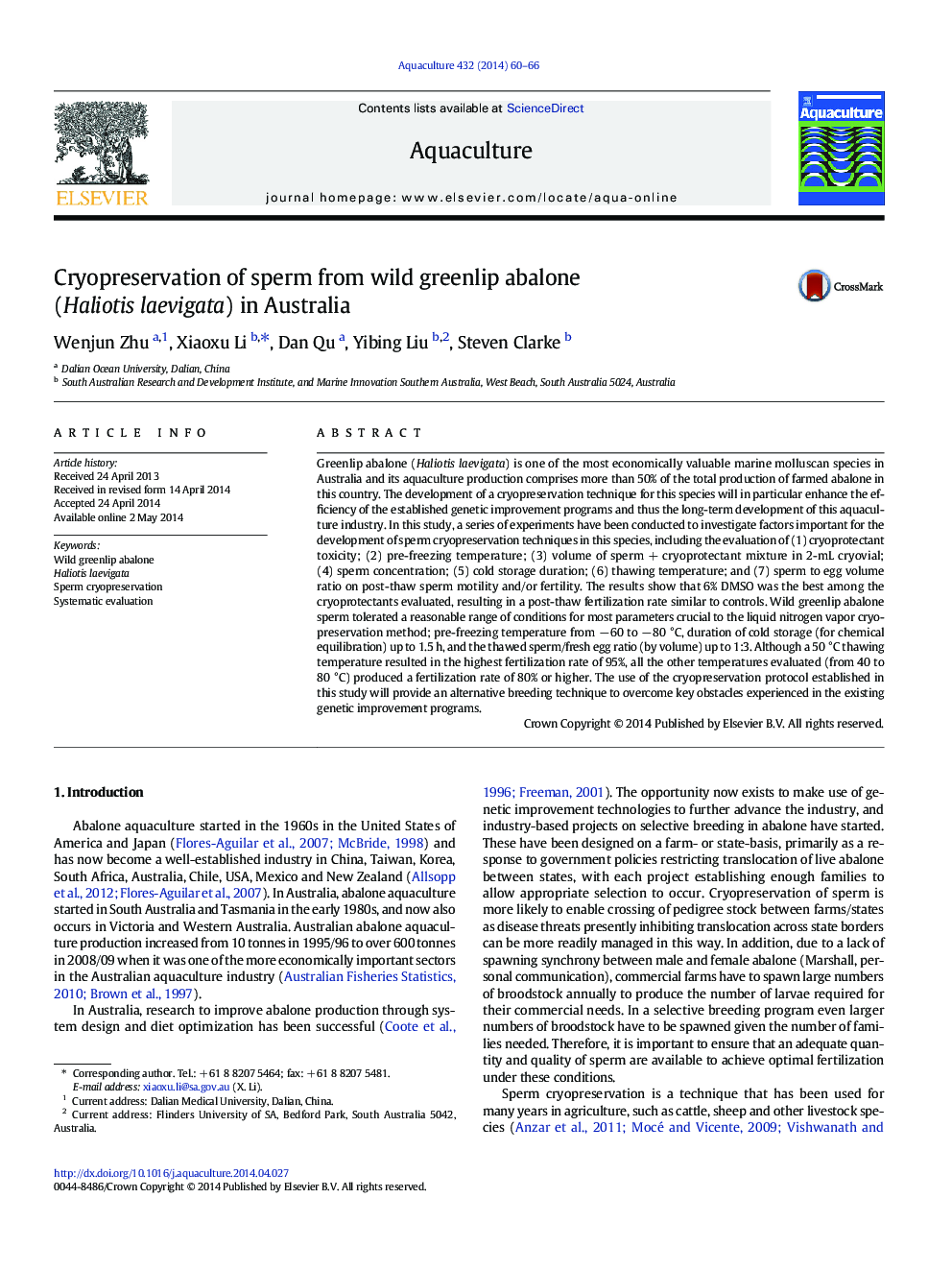| کد مقاله | کد نشریه | سال انتشار | مقاله انگلیسی | نسخه تمام متن |
|---|---|---|---|---|
| 2421797 | 1552855 | 2014 | 7 صفحه PDF | دانلود رایگان |

• This is the first report on the development of sperm cryopreservation technique in abalone species farmed in Australia.
• The technique could assist the desired mating required in genetic improvement programs and aquaculture productions.
• We have evaluated various factors critical to the development of sperm cryopreservation technique in abalone.
• High post-thaw fertility has been achieved, with results being similar to those in the controls.
Greenlip abalone (Haliotis laevigata) is one of the most economically valuable marine molluscan species in Australia and its aquaculture production comprises more than 50% of the total production of farmed abalone in this country. The development of a cryopreservation technique for this species will in particular enhance the efficiency of the established genetic improvement programs and thus the long-term development of this aquaculture industry. In this study, a series of experiments have been conducted to investigate factors important for the development of sperm cryopreservation techniques in this species, including the evaluation of (1) cryoprotectant toxicity; (2) pre-freezing temperature; (3) volume of sperm + cryoprotectant mixture in 2-mL cryovial; (4) sperm concentration; (5) cold storage duration; (6) thawing temperature; and (7) sperm to egg volume ratio on post-thaw sperm motility and/or fertility. The results show that 6% DMSO was the best among the cryoprotectants evaluated, resulting in a post-thaw fertilization rate similar to controls. Wild greenlip abalone sperm tolerated a reasonable range of conditions for most parameters crucial to the liquid nitrogen vapor cryopreservation method; pre-freezing temperature from − 60 to − 80 °C, duration of cold storage (for chemical equilibration) up to 1.5 h, and the thawed sperm/fresh egg ratio (by volume) up to 1:3. Although a 50 °C thawing temperature resulted in the highest fertilization rate of 95%, all the other temperatures evaluated (from 40 to 80 °C) produced a fertilization rate of 80% or higher. The use of the cryopreservation protocol established in this study will provide an alternative breeding technique to overcome key obstacles experienced in the existing genetic improvement programs.
Journal: Aquaculture - Volume 432, 20 August 2014, Pages 60–66